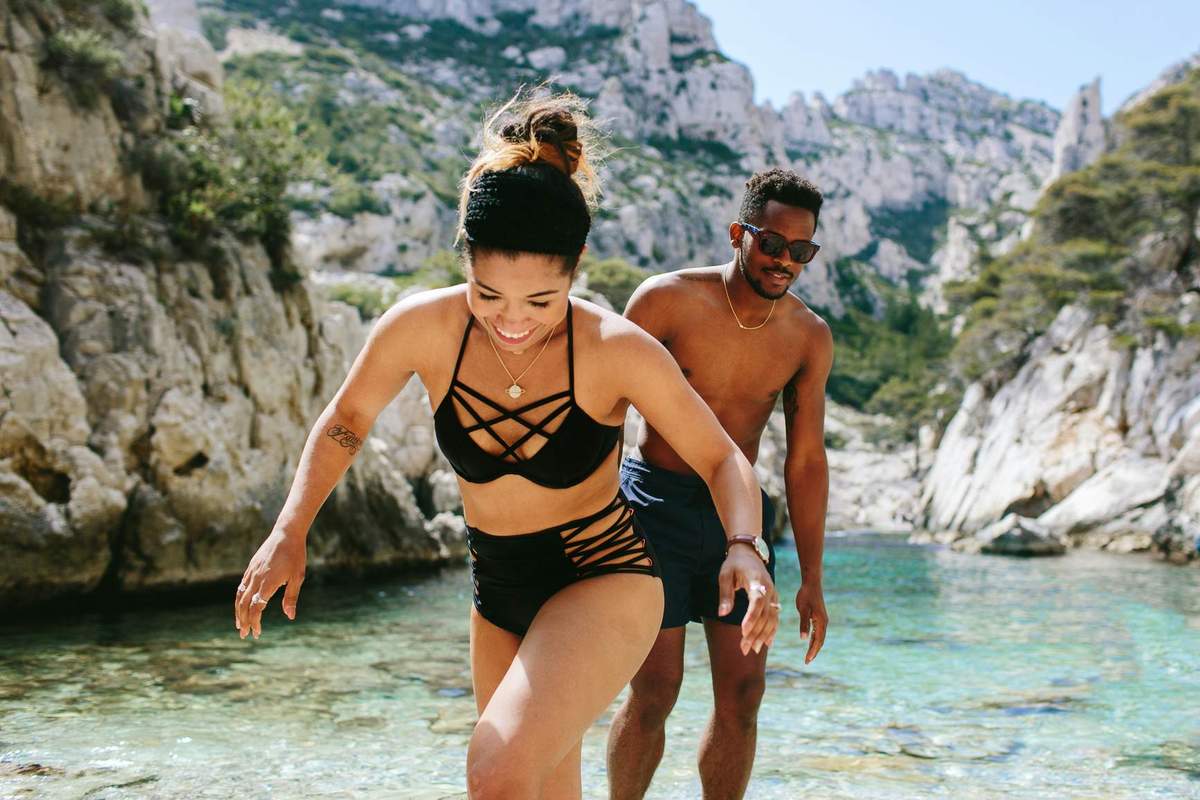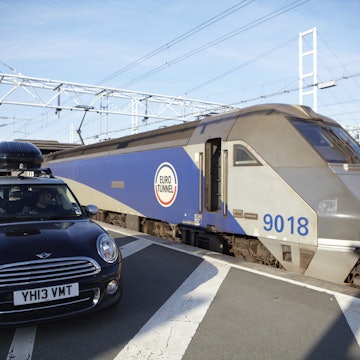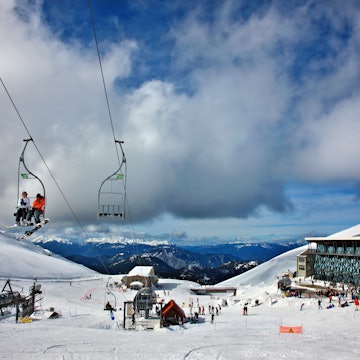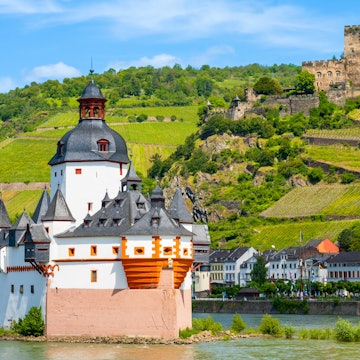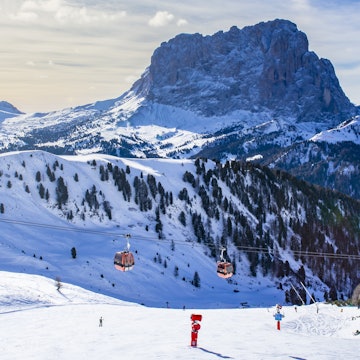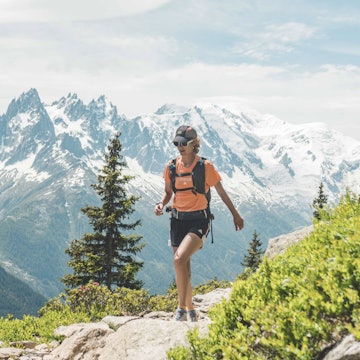

Grenelle swimming zone on the Seine, Paris. JULIEN DE ROSA/AFP via Getty Images
The Seine has ushered in a historic new chapter in Paris, with the city making good on a decade-long promise to bring back public swimming for all.
A century after its ban and a costly €1.4 billion (US$1.6 billion) cleanup operation later, the Seine inaugurated three new swimming sites in July turning one of the world’s most mythologized waterways into an urban beach every summer.
The herculean overhaul is a legacy of the 2024 Paris Olympics, when competitions like the triathlon and marathon swimming events were held in the Seine. But the cleanup was also meant to have a long afterlife, helping Parisians reclaim a waterway that had been a popular public swimming space during the 19th and early 20th centuries until it was officially banned swimming in 1923 due to poor water conditions.
The transformation of the Seine is also part of Mayor Anne Hidalgo’s battle plan against the effects of climate change. By 2050, it’s estimated that the city could face temperatures as high as 50ºC (122ºF). A study published in the Lancet in 2023 found that among all major European capitals, the risk of mortality from heat waves is greatest in Paris due to a variety of factors, including urban heat islands and air pollution. Along with the greening of public spaces, the opening of free outdoor bathing sites is a strategy aimed at mitigating extreme urban heat in the French capital.
Here’s what you need to know about swimming in Paris.
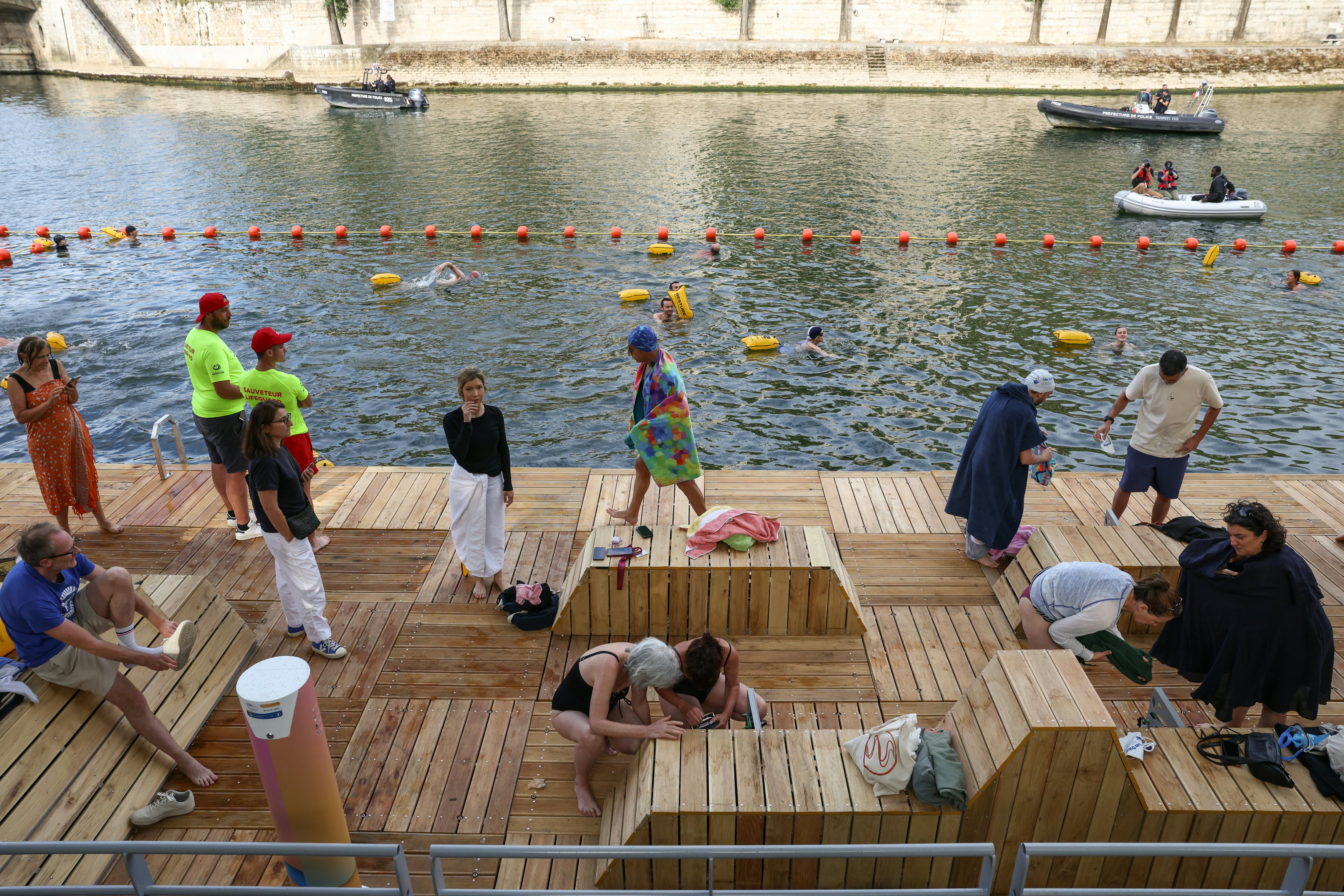
When does the swimming season start and end on the Seine?
For its inaugural year, the outdoor swimming season on the Seine kicks off July 5 to August 31 to coincide with the opening of its annual Paris Plages (or Paris Beaches) summer festival. The sites will be open every day, and are free.
Where can you swim in the Seine?
Plan your visit to the three new swimming spots in the Seine with this guide to each one, including age and height restrictions, swim test requirements, and hours of operation.
1. Bras Marie
The most central of the three swimming areas with views facing Île Saint-Louis, Bras Marie can accommodate up to 150 people. Facilities include lockers and showers. Because of the strength of the river current, swimmers must also be at least 14 years of age and at least 1.4m tall (4ft 6in).
Opening hours: The site is open only in the mornings 8am to 11:30am Monday to Saturday, and all day 8am to 5:30pm Sundays.
2. Bercy
The largest of the three sites, located on the east end of the city, Bercy has two swimming areas that can accommodate 700 people, including 300 swimmers at the same time. Swimmers must be at least 10 years old and a height of 1.2 meters (4ft). No more than three minors under the age of 14 per adult is allowed. The site includes changing rooms, showers, toilets and a solarium.
Opening hours: 11am to 9pm daily.
3. Grenelle
At the other end of the city to the west, Grenelle offers views of Île aux Cygnes and can accommodate 200 people, including 150 people in the swimming area. The site is family-friendly with a dedicated children’s pool for those aged three and up who must be accompanied by an adult. Those in the bottomless swimming area however, must be 14 years of age and at least 1.4m tall (4ft 6in). Amenities include kayaking, changing rooms, showers and toilets.
Opening hours: 10am to 5:30pm Monday to Friday; 10am to 4:45pm Saturday; 10am to noon, 12:30pm to 2:15pm, 2:45pm to 5:30pm Sunday.
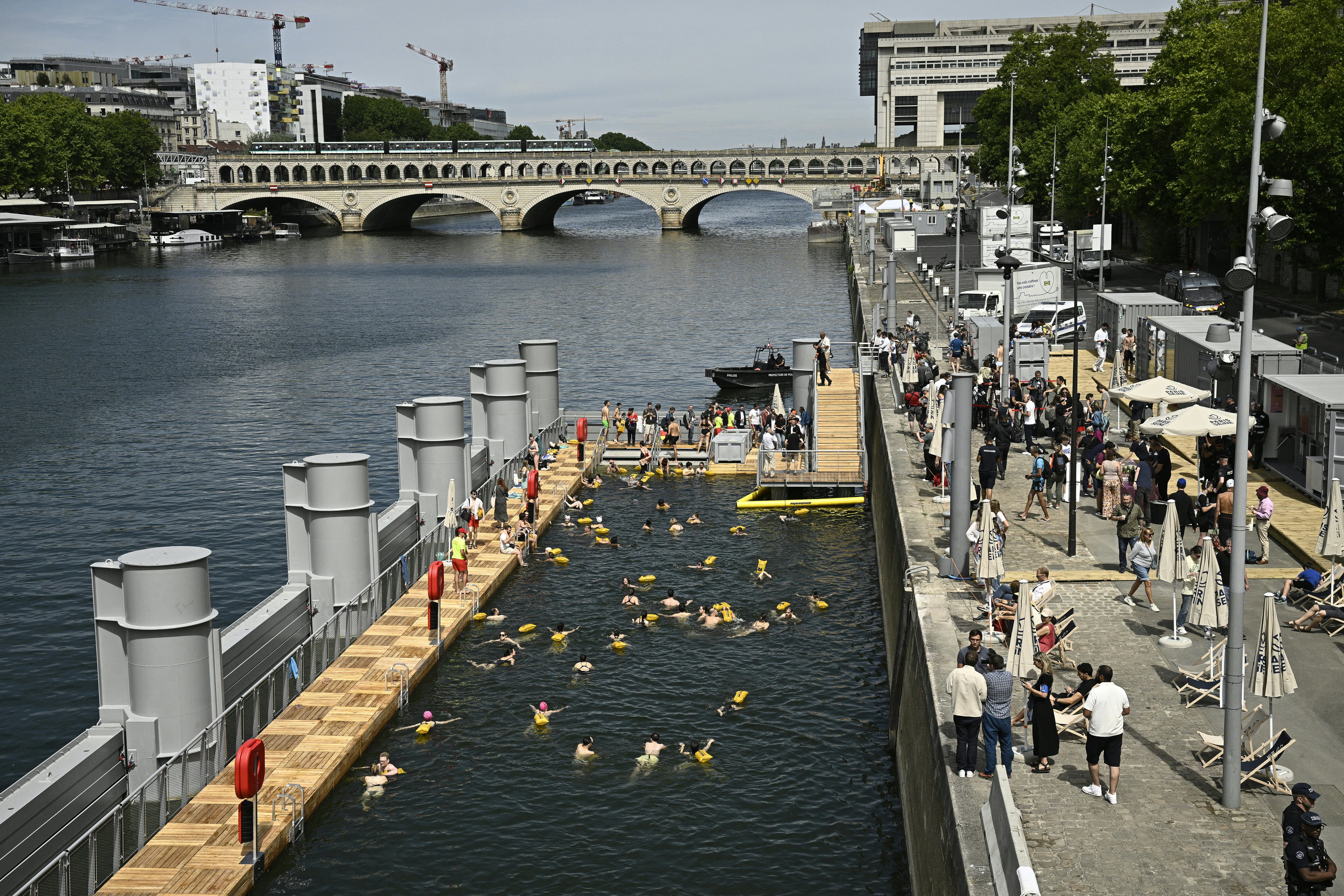
There are swim tests for every swimmer
Access to swimming areas is subject to passing swim tests and the mandatory use of a buoy. Lifeguards will test swimmers’ skills in a specific area of the pool. Once approved, the user is allowed to swim independently. All minors under the age of 14 must be accompanied by an adult.
Swimmers and water quality are monitored
Lifeguards will monitor swimming at all three sites and the water quality tested every day. Check Paris.fr for closures in the event of poor water quality or bad weather conditions.
Two sites are accessible to those with reduced mobility
While swimming areas are accessible to people with reduced mobility at Bras Marie and Grenelle, only the solarium is accessible at Bercy.
Where else can you swim in Paris?
Meanwhile, if the idea of swimming in the Seine doesn’t quite float your boat yet, here are a five other alternative swimming sites across Paris to shake up the usual museum, bistro and boulangerie itinerary in summer.

1. Enjoy one of Paris’ most beautiful pools at Butte-aux-Cailles
One of the most beautiful and oldest public pools in Paris (from 1924), the Butte-aux-Cailles is classified as a historic monument thanks to its superb art nouveau architecture. The dense red-brick exterior belies its airy, light-filled interior and cathedral-like ambiance in which swimmers perform laps under a vaulted ceiling and elegant, soaring arches. Along with two indoor pools (one for adults, the other for kids), the venue was the first to open an outdoor Nordic pool that’s heated to 28ºC (82ºF) by reusing the heat produced by computer servers in the basement. The outdoor pool is open year-round.
Local tip: Make a day of your visit and explore the pool’s namesake neighborhood, a village-like spot in the outlying 13th arrondissement that’s home to artisans, sloping cobblestone alleyways, interesting street art, quaint bars and lively cafes.

2. Take a dip in the buff at Roger Le Gall pool
Named after a WWII-era hero of the French Resistance, the Roger Le Gall pool is located in the city’s eastern 12th arrondissement. The complex features two swimming areas: an Olympic-sized pool that’s open to the public for serious swimmers keen to get in a few laps and a smaller second pool reserved for sports clubs. In summer, the canopy above the bigger pool is removed, letting you swim in the open air. But take note: in partnership with the Paris Naturist Association, the pool opens up every Monday, Wednesday and Friday night to those who prefer a swim in their birthday suit over a swimsuit.

3. Float in the open-air Josephine Baker pool
Come summer, the 13th arrondissement’s Josephine Baker pool (named after the American-born dancer-singer-phenomenon) removes its glass canopy and becomes a floating, open-air pool on the Seine, offering sweeping views of the famous river. Want to squeeze in a workout? The pool features four 25m-length (82ft) lanes with depths ranging from 0.9 to 2.1m (3 to 7ft). If you’re less about the swimming, more about the lying out, the pool also has a 500-sq-m (5400-sq-ft) sundeck, where you can relax on one of the chaises and get your daily dose of vitamin D.

4. Join the locals for a swim at Bassin de la Villette
Since 2017, as part of the annual Paris Plages festival, the Bassin de la Villette in the northeast part of Paris has set up a free outdoor swimming area in the city’s largest artificial body of water. The pool is divided into three distinct areas: a paddling pool for children, a small pool with a maximum depth of 1.2m (4ft), and a large pool reserved for experienced swimmers with a depth of 2.1m (7ft). Water quality is monitored every day, with the pool wheelchair accessible and limited to just 500 daily bathers.
Though Paris Plages at the Seine is the main event, the programming at the Villette edition draws more locals than tourists as it’s further out from the city center. Other water activities here include kayaking, canoeing and paddle boarding.
Local tip: Another popular water activity on the Bassin de la Villette is to rent electric boats from Akwa for leisurely rides up and down the canal. You don’t need a license, and you can also bring a picnic lunch or dinner on board. Further south, the Canal St-Martin has also opened an outdoor swimming site in the 10th arrondissement.

5. Splurge at the luxurious Hôtel Molitor Paris
Admittedly different from outdoor swimming pools geared to the public, this sensational pool is located at a luxury hotel and is normally reserved for hotel guests or members of a private club who pay some €4500 (US$5280) in annual membership dues. But the outdoor pool at the Hôtel Molitor Paris – MGallery in the city’s swank 16th arrondissement deserves a mention for an especially revealing reason: it was here, at a swimsuit competition in 1946, that a former automotive engineer turned fashion designer named Louis Réard chose to debut a revolutionary, teeny-weeny, two-piece bathing costume one wag called “smaller than the smallest swimsuit in the world.” You might know it today as the bikini.
Though normally closed to the public, non-guests can get access to the pool if they book an Escale Molitor treatment at the Spa by Clarins which starts at €310 (US$364), or if they book the “Lunch and Swim” offer at the hotel brasserie or rooftop.






